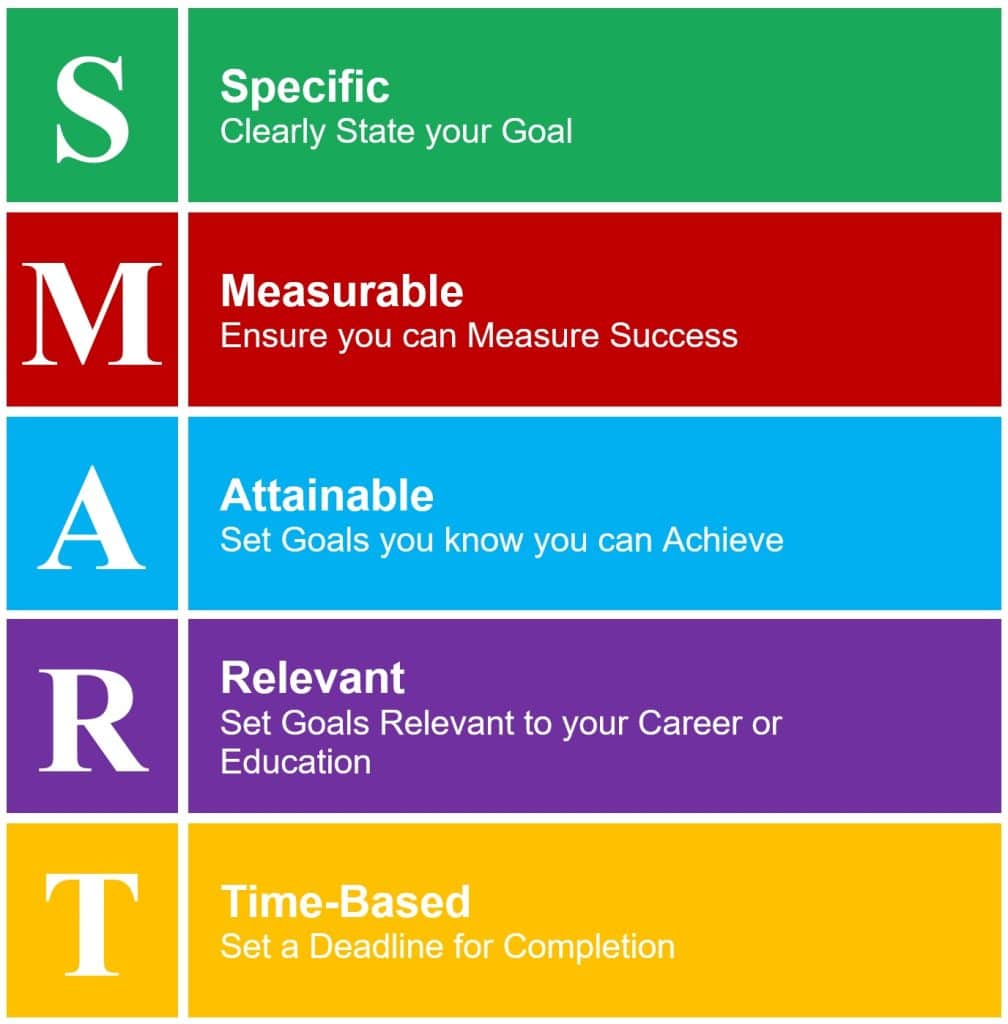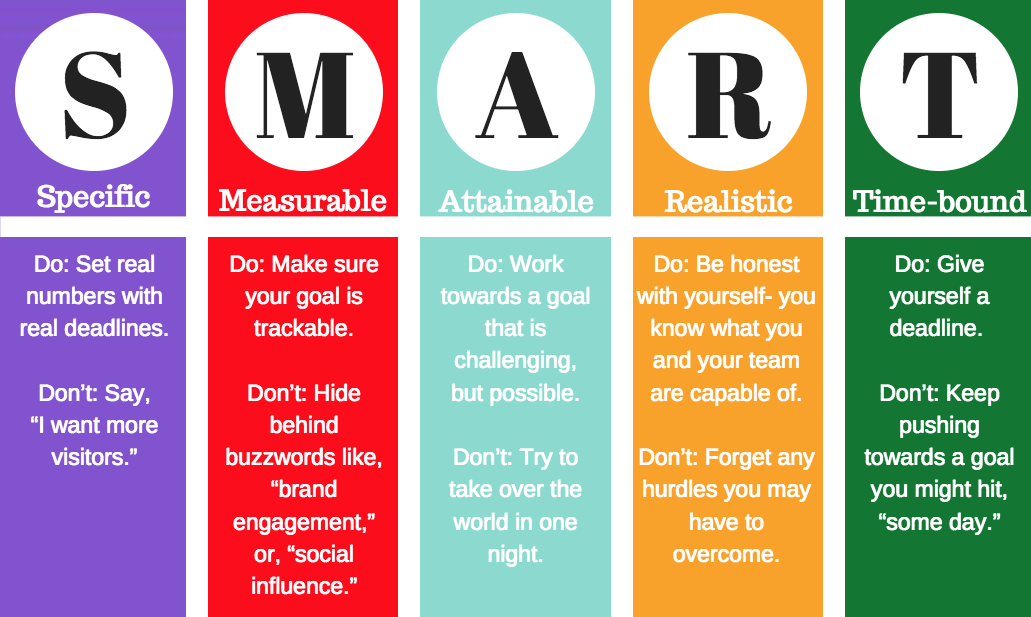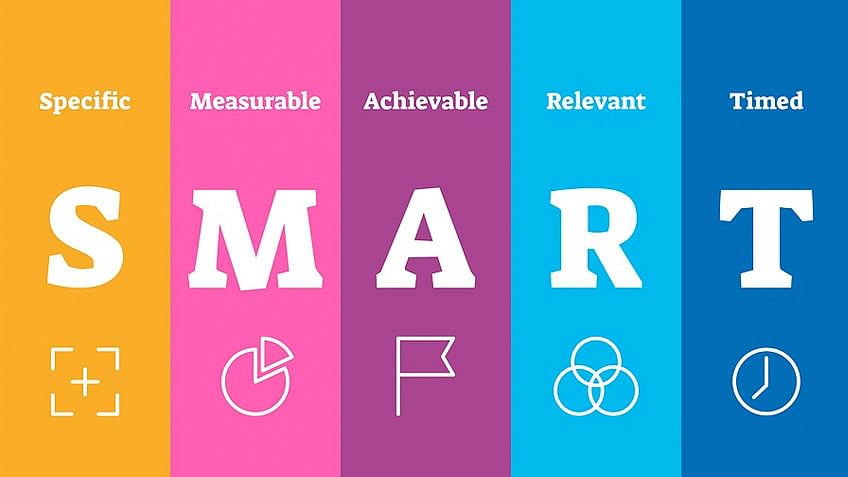
Real-world Teacher SMART goals examples
In the realm of education, setting goals is a fundamental practice for teachers seeking to enhance their effectiveness in the classroom. Among the various goal-setting frameworks available, SMART goals stand out as a practical and structured approach for educators to delineate clear objectives and track progress systematically. Through a closer examination of real-world Teacher SMART goals examples, we aim to provide educators with actionable strategies and inspiration to set and achieve meaningful goals in their teaching careers.

What are Teacher SMART goals?
SMART goals are a structured approach used by educators to set clear, achievable objectives for their teaching practices. Let’s break down each component:
Specific:
When setting a SMART goal, it’s important to clearly define what you want to accomplish. This means being specific about the desired outcome and the actions needed to achieve it. For example, instead of saying “improve student engagement,” a specific goal could be to “increase student participation in math class by incorporating interactive learning activities like group problem-solving exercises and online quizzes.”
Measurable:
A SMART goal should include criteria for measuring progress and success. This involves determining how you will track your progress and knowing when you have achieved your goal. For instance, you could measure student participation rates by tracking the number of students actively participating in class discussions and activities. Setting measurable targets allows you to monitor your progress and adjust your approach as needed.

Achievable:
It’s essential to set goals that are realistic and attainable within the resources and constraints available to you. Consider your skills, time, and support needed to accomplish the goal. For example, if you’re implementing new teaching methods, make sure you have access to the necessary training and resources to support your efforts. Setting achievable goals ensures that you stay motivated and focused on making meaningful progress.
Relevant:
A SMART goal should align with your broader objectives and priorities as an educator. It should contribute to your professional growth and support student learning outcomes. For example, if your school has identified improving academic performance in math as a priority, setting a goal to increase student participation in math class would be relevant to that objective. Aligning your goals with broader priorities ensures that your efforts have a meaningful impact on student success.

Time-bound:
Finally, a SMART goal should have a deadline or timeframe for achievement. This creates a sense of urgency and accountability, motivating you to take action and stay focused on your goal. For example, you could set a deadline to implement interactive learning activities within the first month of the semester and assess student participation monthly. Setting a clear timeline helps you stay on track and ensures that you make steady progress toward your goal.
By following the SMART framework, teachers can set goals that are specific, measurable, achievable, relevant, and time-bound. This structured approach helps educators clarify their objectives, track their progress, and ultimately, improve their teaching practices and student outcomes.
See also:
Full-time & Part-time Cover Teachers at Public Schools
Real-world Teacher SMART goals examples
Here are the Real-world Teacher SMART goals examples:

| Goal | Specific | Measurable | Achievable | Relevant | Time-bound |
|---|---|---|---|---|---|
1. Enhance Student Engagement – Teacher SMART goals examples | Improve student engagement in English literature class by incorporating interactive activities and technology into lessons. | Increase student participation by 20% compared to the previous semester. | Attend professional development workshops on integrating technology into the classroom and gather resources for interactive activities. | Enhancing student engagement aligns with the school’s goal of improving academic performance. | Implement new teaching strategies within the first two weeks of the semester and assess student engagement monthly. |
2. Improve Student Literacy Skills – Teacher SMART goals examples | Enhance student literacy skills by implementing a daily 20-minute independent reading session. | Increase students’ average reading comprehension scores by one grade level on standardized tests. | Develop a library of age-appropriate reading materials and establish a structured routine for daily independent reading. | Improving literacy skills is essential for overall academic success across subjects. | Begin daily independent reading sessions within the first month of the school year and assess progress quarterly. |
3. Increase Parental Involvement – Teacher SMART goals examples | Increase parental involvement by hosting monthly parent-teacher meetings and workshops. | Achieve a 50% increase in parent attendance at meetings and workshops compared to the previous school year. | Schedule meetings at convenient times for parents, provide translation services as needed, and offer engaging workshops on topics of interest. | Building strong partnerships with parents supports student learning and fosters a supportive school community. | Host the first parent-teacher meeting within the first month of the school year and evaluate attendance after each session. |
4. Improve Student Performance in Math – Teacher SMART goals examples | Improve student performance on math assessments by implementing weekly problem-solving exercises and targeted interventions for struggling students. | Increase the average math assessment scores by 15% by the end of the semester. | Develop a repository of challenging math problems aligned with the curriculum and schedule regular intervention sessions for students who need extra support. | Strengthening math skills is crucial for academic success and future career opportunities. | Introduce weekly problem-solving exercises starting from the second week of the semester and assess progress bi-weekly. |
5. Promote Cultural Diversity – Teacher SMART goals examples | Promote cultural diversity in the classroom by integrating multicultural literature and activities into the curriculum. | Incorporate at least one multicultural lesson per unit and assess students’ understanding through discussions and projects. | Source diverse literature and materials, collaborate with colleagues to develop culturally inclusive lesson plans, and provide training on cultural sensitivity. | Fostering an inclusive classroom environment promotes respect for diversity and prepares students for a multicultural society. | Introduce multicultural lessons starting from the third week of each unit and review progress at the end of each semester. |
These Teacher SMART goals examples are Specific, Measurable, Achievable, Relevant, and Time-bound, providing educators with a blueprint for success in their professional development journey. In this article, we has explored some of the most practical and real-world Teacher SMART goals examples for teachers, offering insights into how these goals can be applied to improve teaching practices and student outcomes.
